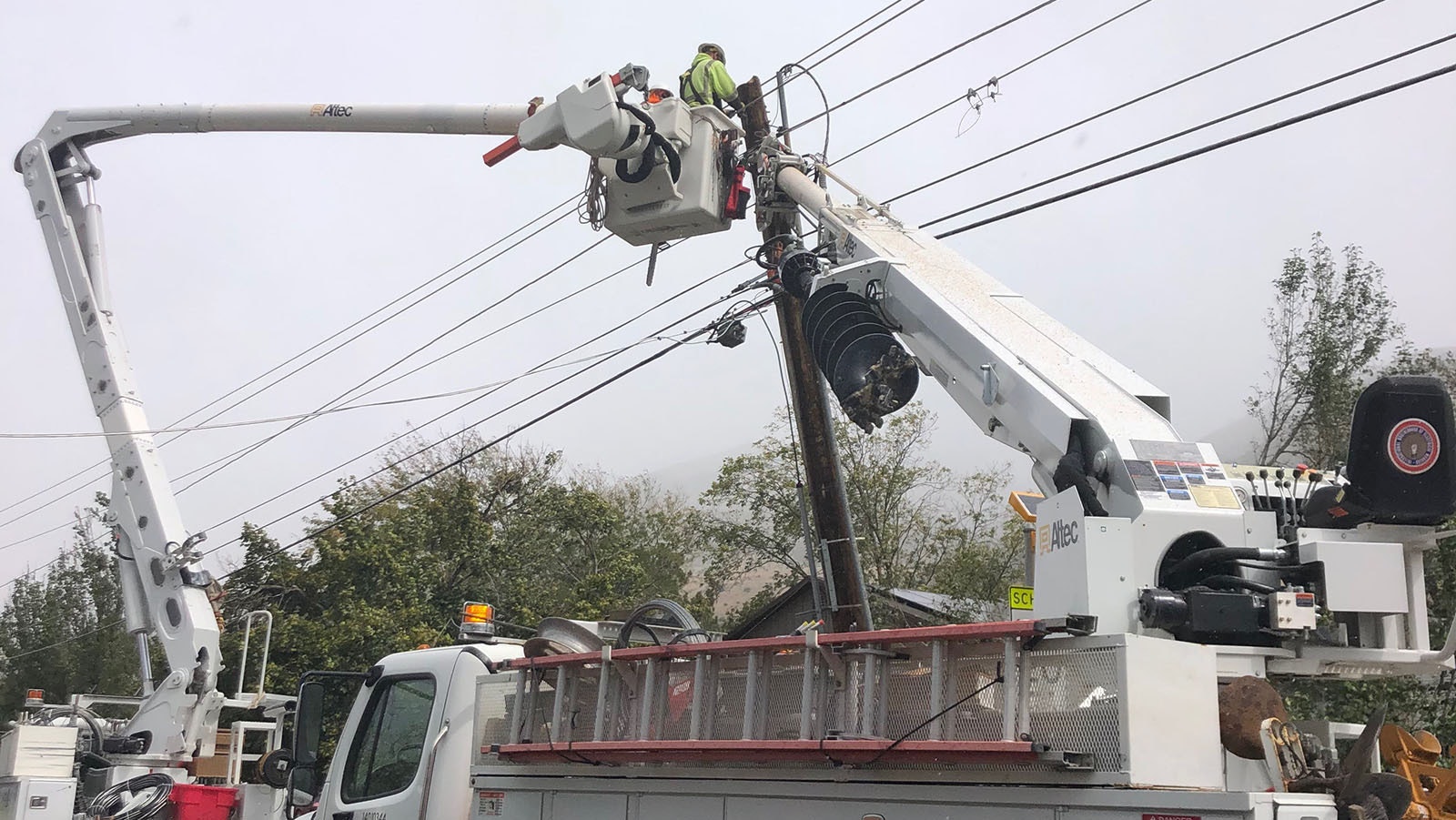Wyoming’s largest utility, Rocky Mountain Power, has requested two rate increases that combined will increase electricity bills by 30%.
The Wyoming Public Service Commission will consider the company’s request at a hearing in October, but Rep. Tony Locke, R-Casper, requested the PSC hold a public hearing, which is now scheduled for Aug. 24 so Wyoming residents can voice their concerns.
Besides the impact to people’s energy bills, Locke told Cowboy State Daily the increases will impact Wyoming businesses.
Cost Of Transition
In March, the company, which is owned by PacifiCorp, requested a larger rate increase for a net power cost adjustment due to increases in purchased power and the cost of fuel. A smaller increase requested in April was to cover unexpected fuel costs arising from high demand during last winter’s cold snaps.
Sen. Cale Case, R-Lander, told Cowboy State Daily that justification is not considering the bigger, holistic picture of what’s happening.
“They have to purchase power because they don’t make it,” he said. “It’s not available when the wind doesn’t blow or it’s dark or cloudy outside.”
Finding and buying that energy on the market is expensive, Case said.
The utility plans to shut down most coal-fired electrical generation over the next couple decades and replace it with natural gas as a bridge fuel to keep the lights on until there’s enough wind and solar power to satisfy demand on the grid at all times.
Over the past few years, the utility has become more dependent on the volatile natural gas market, Case said, and its plans will only leave it more so.
“It’s 100% due to how we transitioned the electric utility. This is what it’s all about. These are the decisions we’ve made,” Case said.
Creating Chaos
Kevin Kilty, a retired University of Wyoming adjunct professor of engineering, submitted comments to the PSC that are critical of the specific justifications the company listed for the rate increase.
Among the questions Kilty raised in his comments is that PacifiCorp is putting large investments in transmission lines, and the rate increases will help cover the costs of this buildout.
Kilty told Cowboy State Daily that this would open up markets in southern California to Wyoming wind farms, but these transmission lines would also connect Wyoming to large amounts of solar produced in the southwest deserts.
However, that’s only eight hours of the day, and it begins to die down at some of the highest periods of demand in the late evening. That means a lot of excess energy imported into the state, undermining the energy market in Wyoming.
“That's going to be a sort of a chaos generating mechanism in the power market. And how it works out for Wyoming, I think is anybody's guess,” Kilty said.
Nameplate Rating
Kilty said that part of the investments the company is seeking to cover with the rate increase is the Rock Creek wind project.
“They continue to play the game of just talking about the nameplate rating of these wind plants. That is not what they're worth,” Kilty said.
Since wind and solar run only under the right weather conditions, 500 megawatts of wind, for example, is not the same as 500 megawatts of coal-fired electrical generation. Since electricity needs to be produced the moment it’s consumed, wind and solar require some backup electrical source that can be dispatched when they’re not producing.
“Rock Creek I is worth about 200 megawatts on its nameplate. Without backup, it's worth about a 20 megawatt power plant, which is nothing, but it's going to be really expensive. And they want the ratepayers to pay for that,” Kilty said.
In its long range planning documents, the company plans to build more storage, but battery facilities usually provide backup for a matter of hours, which isn’t enough to bridge gaps in solar and wind power.
Likewise, hydroelectric storage facilities, which last about twice as long, require a lot of up-front capital costs and lengthy permitting times.
Lowest Cost Options
David Eskelsen, spokesperson for PacifiCorp, told Cowboy State Daily in April that the additions of renewable energy resources were selected from the lowest cost options. Without the buildout, he said, rates would have increased by $85.4 million more in Wyoming.
Absent those resources, customers of Rocky Mountain power would have paid higher costs for wholesale natural gas and coal power and lost production tax credits, which are subsidies for new wind and repowered wind power.
The $85.4 million also factors in efficiencies gained as a result of new transmission lines. The figure does not, however, estimate what costs would have been if new coal or natural gas plants would have been built instead of wind resources.
The company has only requested three general rate increases since 2015, which includes the rate request filed in March.
According to EIA data, RMP has among the lowest rates of other major regional and Wyoming utilities.
Double Whammy
Locke said that, should these two recent rate increases be approved, residents are going to get a double whammy. The first comes directly to their electricity bills.
The second will come when businesses pass on their increased costs to consumers.
In some cases, however, Wyoming businesses will have a hard time absorbing the rate increases. Wyoming has a lot of small producers in the oil and gas industry, and they’re at the mercy of oil prices.
“In some cases, their margins aren’t that high,” Locke said. “So this could adversely affect them.”





